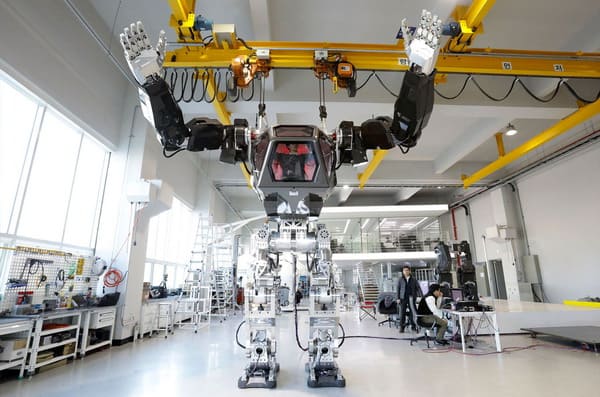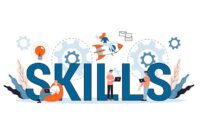
Trend 1: The pharmaceutical revolution: advanced coronavirus tests and vaccines
The coronavirus has shaken up the pharmaceutical industry. We have learned to test drugs faster and easier. Traditional clinical trials are a thing of the past – they have been transferred to a virtual platform. Consulting and data collection have also moved online. Such transformations can take root and change pharmaceuticals forever.
We saw how quickly tests for Covid-19 appeared around the world, and then vaccines from Pfizer, Moderna and AstraZeneca.
Pfizer and Moderna have developed messenger RNA vaccines for the first time in human history. In 2022, we will see even more new technologies for the production of coronavirus tests and vaccines.
Trend 2: Remote and video conferencing will stay with us
The pandemic has led to a skyrocketing rise in the popularity of telecommuting and video conferencing. Whether we like it or not, it will continue in 2022.
Founded in 2011, Zoom has become a symbol of the pandemic. Other video calling services also helped us stay connected to reality: Webex from Cisco, Teams from Microsoft, Google Hangouts, GoToMeeting, and BlueJeans from Verizon.
Many newcomers have appeared in the field of remote control. Startups Bluescape, Eloops, Figma, Slab and Tandem have come up with collaboration solutions. With their help, you can create and share content, communicate with colleagues, track project results, train employees, and organize virtual teambuildings. These tools help teams track collaborative learning and documentation. And here you can also create a virtual office that imitates a regular one, so that colleagues communicate and interact.
Trend 3: Contactless delivery is the new norm
In the US, the popularity of contactless delivery has grown by 20%, people want to minimize physical contact – this is the new norm. This service is provided by DoorDash, Postmates and Instacart. Grubhub and Uber Eats have also expanded the reach of contactless delivery and have no plans to ditch it in 2022.
Meituan is the first company in China to offer contactless delivery in Wuhan. Now she uses drones to deliver groceries to customers. Meituan tested this technology last year, but the service was recently launched.
China is not the only country to turn its attention to drones. American startups Manna, Starship Technologies and Nuro are tackling this problem with robotics and AI-powered applications.
Trend 4: The prosperity of telemedicine
In the healthcare sector, everyone is trying to reduce the risk of contracting the coronavirus to their workers and patients. Many private and public clinics have started offering telemedicine services. The doctor and the patient communicate via video chat, artificial intelligence conducts diagnostics using photographs, and medicines are delivered contactlessly.
The number of American patients switching to telemedicine has increased 50% from pre-pandemic levels. IHS Technology expects this number to reach 70 million soon. And Forrester Research predicted that by early 2022, the number of remote receptions will reach a billion.
This service is now provided by several public companies: Teladoc Health, Amwell, Livongo Health, One Medical and Humana. Startups are not lagging behind – telemedicine services are offered by MDLive, MeMD, iCliniq, K Health, 98point6, Sense.ly and Eden Health.
In addition to telemedicine, in 2022 we are waiting for news from the field of biotechnology and artificial intelligence. Machine learning (such as Suki AI) will be used in diagnostics, administrative work and the creation of robots for healthcare.
Trend 5: Distance learning is part of the education system
The coronavirus has spurred the development of online education. During the pandemic, 190 countries closed schools and universities, sending pupils and students home. About 1.6 billion people have faced this new reality.
Schools, colleges and even sports centers have organized videoconferencing classes. Many educational institutions were advised to partially leave the remote even after reopening.
Chinese 17zuoye, Yuanfudao, iTutorGroup and Hujiang, American Udacity, Coursera, Age of Learning and Outschool, and Indian Byju’s are some of the best online learning platforms. They helped the whole world during the pandemic and will continue to work in 2022.
Trend 6: Large-scale development of 5G infrastructure
The demand for high-speed internet and the transition to smart home and city systems have pushed the development of 5G-6G technologies. In 2022, large corporations and startups will create new infrastructure, utilities and updated applications on their basis.
Many carriers are already rolling out 5G, with Australia building the entire infrastructure even before the pandemic. The American company Verizon announced a massive expansion of its 5G network in October 2021. It will cover more than 200 million people. Technology is spreading rapidly in China too. But the leader in the world market is the Swedish company Ericsson. More than 380 telecom operators are investing in 5G, and more than 35 countries already offer such a service.
Among the startups in this space, Movandi stands out – it allows 5G to transfer data over long distances – and Novalume (helps municipalities manage public lighting and data through a smart city system). And Nido Robotics uses drones to explore the ocean floor.
Thanks to 5G, drones are improving navigation and using the Internet of Things (IoT) to communicate with on-board devices. For example, South Korean startup Seadronix is using 5G to fuel autonomous ships. The technology allows all devices to work together in real time so that unmanned vessels can navigate without human intervention.
In 2022, the development of 5G and 6G will improve smart cities around the world and support the market for unmanned systems.
Trend 7: Development of AI, robotics, Internet of things and industrial automation
In 2022, the demand for artificial intelligence (AI) and industrial automation technologies will be huge. As production and supply return to their previous levels, labor shortages will become a serious problem. Automation with AI, robotics and the Internet of Things will be the main alternative for manufacturing management.
Here are some of the leading technology companies that provide industry automation with AI and robotics: UBTech Robotics (China), CloudMinds (US), Bright Machines (US), Roobo (China), Vicarious (US), Preferred Networks (Japan), Fetch Robotics (USA), Covariant (USA), Locus Robotics (USA), Built Robotics (USA), Kindred Systems (Canada) and XYZ Robotics (China).
Trend 8: Boom in virtual and augmented reality
VR and AR were actively used in 2021. These technologies have become a part of everyday life and various spheres of life – from entertainment to business. Employees of many companies switched to telecommuting, and AR and VR helped them communicate and work together.
Immersive technology opens up incredible opportunities for transformation in all areas. AR avatars, indoor AR navigation, remote assistants, AI integration into augmented and virtual reality, mobile AR, AR in the cloud, virtual sports events, eye tracking and facial expression recognition technology will be more common in 2022, and 5G and broadband internet accelerate technology diffusion.
The flagships in popularizing AR and VR will be Microsoft, Consagous, Quytech, RealWorld One, Chetu, Gramercy Tech, Scanta, IndiaNIC, Groove Jones and other companies.
Trend 9: Increased micromobility
At the beginning of the year, the micromobility market slowed down due to the pandemic, but by the end it managed to recover to its previous pace. Electric bicycles and electric scooters are becoming more and more popular, they are an alternative to the usual personal and public transport. The market for private micromobility solutions is expected to grow by 9% compared to dock times, and the sharing economy – by 12%.
Milan, Brussels, Seattle, Montreal, New York and San Francisco have built over 30 km of dedicated cycle paths. The UK government announced that sales of diesel and gasoline powered vehicles will be banned after 2030, which has also increased interest in micromobility.
Startups drive innovation in this area. Bird, Lime, Dott, Skip, Tier and Voi became the main ones in this area. There are also several companies in China that have achieved excellent results: Ofo, Mobike and Hellobike.
Trend 10: Self-driving innovation
Progress in autonomous driving technology awaits us in 2022. Honda recently announced that it will mass produce self-driving cars. And Tesla’s autopilot has learned not only to control the movement on the lane and automatically rebuild, but also to recognize road signs, as well as traffic signals.
Ford is also joining the race – expecting the launch of a self-driving car sharing service in 2022. Some customers will be able to buy such machines already in 2026. Other automakers, such as Mercedes-Benz, will also try to incorporate autonomous driving technologies into new models. For example, GM is looking to add Super Cruise autopilot functionality to 22 of its models by 2023.
Due to fierce market competition, other companies, including Lyft and Waymo, are also developing self-driving technology. Many of them have already spent billions of dollars on startups in this area: GM bought Cruise for $ 1 billion, Uber – Otto for $ 680 million, Ford – Argo AI for $ 1 billion; and Intel – Mobileye for $ 15.3 billion.
Looking to the future
Technological trends in 2022 will be a logical continuation of 2021, but the impact of COVID-19 will change over the course of the year. Many new behaviors will become the norm and drivers of technological and business innovation.




